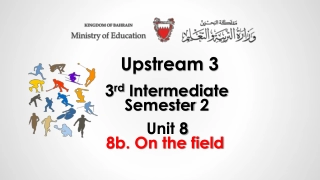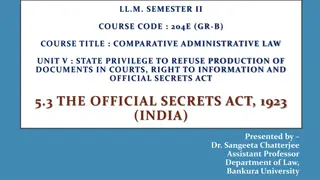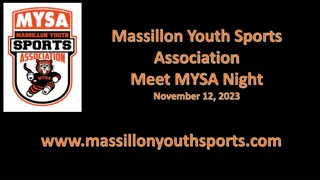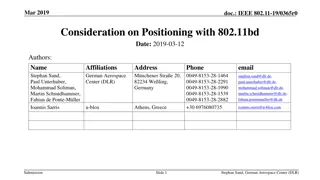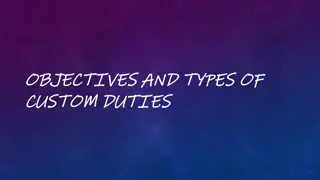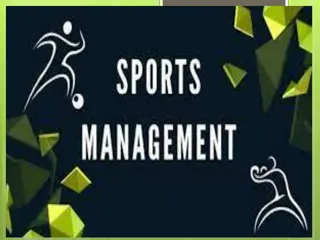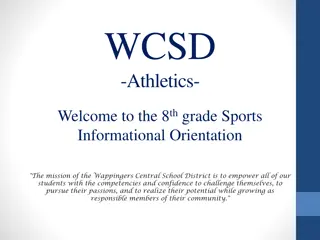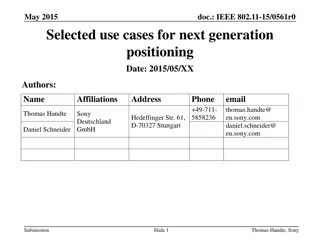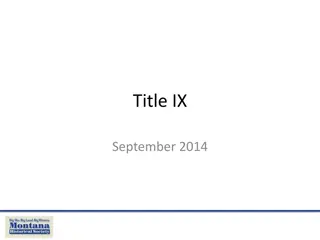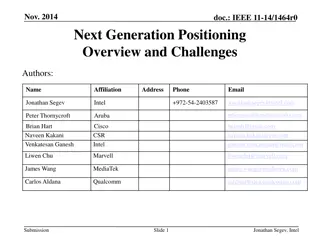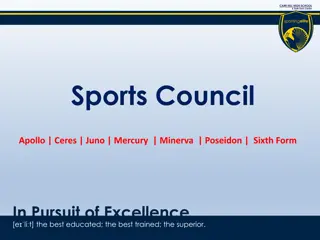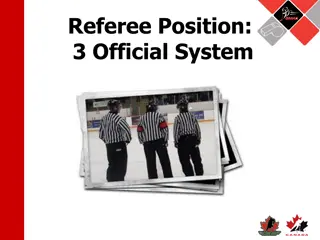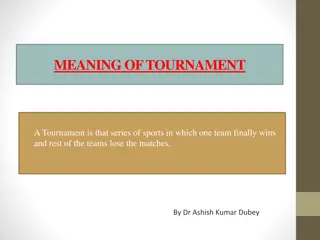Role of an Official: Duties, Qualities, and Positioning in Sports
Understanding the pivotal role of an official in sports, this content delves into the qualities of a competent official, their duties, and the importance of smooth game progression within the rules. From prevention of rule infractions to ensuring fair play, each aspect of officiating is explored in detail along with insights into positioning mechanics, rule changes, and certification requirements.
Download Presentation

Please find below an Image/Link to download the presentation.
The content on the website is provided AS IS for your information and personal use only. It may not be sold, licensed, or shared on other websites without obtaining consent from the author.If you encounter any issues during the download, it is possible that the publisher has removed the file from their server.
You are allowed to download the files provided on this website for personal or commercial use, subject to the condition that they are used lawfully. All files are the property of their respective owners.
The content on the website is provided AS IS for your information and personal use only. It may not be sold, licensed, or shared on other websites without obtaining consent from the author.
E N D
Presentation Transcript
WELCOME AND INTRODUCTIONS ROLE OF THE OFFICIAL QUALITIES OF A COMPETENT OFFICIAL DUTIES AND POSITIONING MECHANICS RULE CHANGES RULE ADDITIONS RULE STUDY CERTIFICATION
ROLE OF THE OFFICIAL SMOOTH GAME PROGRESSION WITHIN RULES LITTLE INTERFERENCE PREVENT RULE INFRACTIONS
Signal ready by raising one arm in the air WATCH for ROUGH PLAY! HL moves downfield after determining the kick has traveled 20 yards, keeping outside the widest player on the receiving team Call tags & rough play Duties of HL and BJ on a kick-off G BU O O 10 O 20 O O BJ 30 Back Judge moves behind ball carrier to watch for touch. Signals onside or offside pass Call tags & rough play O O 40 HL 50 C R K X X X X X X
HL Duties on Scrimmage Play HL position Count offensive players Watch for receivers lining up or running offside Watch for QB running over the LoS and help Head Referee with this call Move at least as far as 1stdown bag or move downfield with play, watching for infractions and spot of ball Hold or take the spot where the ball is when declared dead G 10 BU 20 O O O R O 30 O O LoS C X X X X X 40 HL QB R
BJ Duties on Scrimmage Play BJ position Count defensive players Watch for Rusher going offside Watch for multiple rushers Watch for defenders lining up or running offside Move at least as far as 1stdown bag or move downfield with play, watching for infractions and spot of ball Hold or take the spot where the ball is when declared dead G 10 BU 20 O O O R O 30 O O C BJ X X X X X 40 QB R
Goal Line responsibilities O R O G BJ O O O O O O O O 5 HL C X X X X X 10 QB 15 20
HL Duties on Punt Play HL Punt positioning Hold the LoS until you are certain that the ball will cross the LoS, in flight. G 10 If the punt is good, hustle downfield and get parallel to the ball carrier, and follow them. BU 20 O O O R O 30 Call no yards where applicable O O LoS C HL X X X X X Move into the field, no further than hash mark, if the play goes to the opposite side of the field 40 QB R
BJ Duties on Punt Play BJ punt positioning Position yourself 5-10 yards away from but parallel to the return player G 10 Be alert for laterals Make a no-yards call if applicable BU 20 O O Move into the field, no further than hash mark, if the play goes to the opposite side of the field O R O 30 O O C BJ X X X X X 40 Watch for return punts from the end zone. QB R
Other Duties General After each play hustle back to the line of scrimmage and confirm the down with the Head Referee. Try to pay attention and know what down it is; the more you are paying attention to the game the better job you will do and the less hassle you will take from the teams. Use of the Whistle The whistle is used to kill the play. It must be blown with authority (a loud, sharp blast). Never blow the whistle on the assumption or expectation that a touch will be made. If you see it, call it. Spotting the Ball When the play is over and you have the exact location of where the ball is, inform the other officials verbally that you have the spot. This will allow them the opportunity to retrieve the ball and set up for the next play. In order to spot the ball correctly, place your foot parallel to the sideline and use your toe to represent the forward point of the ball. Also, turn your body so that it faces the direction of travel of the ball and of the team that has possession of the ball. Have the players bring the ball to you then place the ball parallel to your foot with the front end of the ball lined up with your toe.
Other Duties Spotting the Ball - continued If you have a penalty to report to the Referee, have another official come and take your spot. In some cases, if the play is too far down the field, use your hat or flag to mark the spot and then report your penalty to the Referee. This will reduce the playing time lost since touch football is straight time. If another official has the spot and a penalty, take that official's spot and allow him/her to report to the Referee. Never yell out or tell either team the call, only report to the Head Referee and keep your tone even and calm End of Game pick up pylons on your side of the field if you are doing the last game of the day return flag and whistle to the Head Referee sign the scorecard so your team does not get penalized
Rules Study 27
Rules Study 28
Rules Study 29
Rules Study 30
Rules Study 31
Rules Study 32
Rules Study 33
Rules Study 34
Rules Study 35
Rules Study 36
Rules Study 37
Rules Study 38
Certification Level 1 exam is an open book exam using the training manual and rule book. If you would like to write the exam we will give you a copy of the materials and you can write at home 70% is a passing grade If you would like to do more officiating take the Level 2 course and we will get you trained on field Starting wage is $25/game


